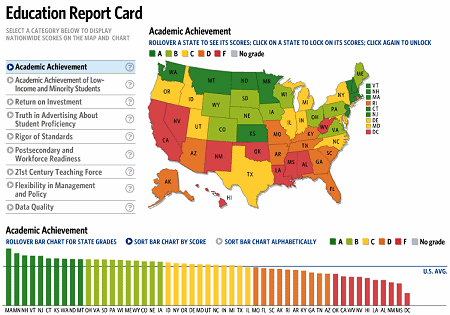
It is possible that you have questions about filling out the FAFSA renewal if you are interested in financial aid. There are several things that you can do to make this process as easy as possible. First of all, you'll need a FSAID and password. You can skip the questions related to creating your account once you have these. Second, ensure you answer all questions related to your FSA ID correctly.
Procedure for renewing your FAFSA
A FAFSA renewal can be completed as soon as October 1. To get started, you need to have all of your relevant information from the previous year. You will need to fill in your federal income tax returns for 2020. The renewal form will automatically include the information from this return. Then, enter your FSA ID number and other identifying details. You will also need to print the Confirmation Page.

While the process for renewing a FAFSA takes less time than filling out the form completely from scratch, it is still important to carefully review the information you have given. Use the IRS data retrieval tool to update your information. Once you have done this, you need to update your information and provide updated financial information. You should also include the correct family sizes. To log in, you will need your FSA ID number and password.
Deadlines
When is the deadline to submit my FAFSA form? The federal deadline to file the FAFSA for 2022-2023 is June 30, but states have their own deadlines. Alaska has an Oct. 1 deadline for filing FAFSA applications. You must submit your renewal application before that date. In this case, you might not be eligible to receive federal student aid. You can find out if you are eligible for federal student aid by contacting your college's financial aid office.
Some deadlines are more strict than others, especially for programs like the ArFuture Grant. The deadline for the Academic Challenge and ArFuture Grant are both July 1, 2022, at midnight Central time. Cal Grant applications close on September 2, 2022. However many state financial aid programs have deadlines even earlier. Make sure you file your application on time to make sure that you meet all deadlines.
Steps
You will need to fill out the FAFSA again if you haven’t done so since last year. We will guide you step by step through this complicated process. Finding the right application is the first step. If you are a dependent students, the application will pre-populate with your income information. However, if this is not the case, you'll need record your previous tax period's income. This will require you to use your parent’s FSA ID. Once you have downloaded the form, print a confirmation document.

Once you have your FSA ID, it is possible to complete the renewal process. Independent students can complete the renewal process independently. Keep track of any changes you make to your status like a change of dependent status. Then, you'll need to complete a new FAFSA application to reflect your correct eligibility for federal financial aid. To make the process smoother, there are several steps you can follow.
FAQ
How long should you spend on college preparation?
The amount of time spent preparing for college depends on how much you plan to devote to your studies. You should begin college preparation courses if you intend to go to college right away after high school. On the other hand, if you plan to take several years off before attending college, you probably don't need to begin planning until later.
Discuss your plans with your teachers and parents. They may recommend specific courses. Keep track of all the courses you have taken and the grades you earned. This will help you know what you need to do next year.
How much does homeschooling cost?
Homeschooling does not require you to pay a set fee. Some families charge between $0-$20 per lesson. Some families offer services for free.
Homeschooling takes dedication and commitment. Parents need to make sure they have enough time to spend with their children.
They should also have easy access to books, supplies, as well as other learning tools. To supplement their education, homeschoolers may need to use community programs and events.
Parents should think about transportation costs, tutors, and other activities.
In addition, homeschoolers must plan ahead for field trips, vacations, and special occasions.
Is it difficult to become a teacher?
It takes a lot of commitment to become a teacher. You will need to devote a significant amount of time to your studies.
While earning your degree, you should expect to work about 40 hours per săptămână.
Also, it is important to find a job you can do. Many students have difficulty finding part-time work that allows them to balance schoolwork and their personal lives.
If you get a permanent job, you'll likely be teaching classes during the workday. You may be required to travel across the country to teach classes during the week.
Are there any skills that are required to excel in my chosen area?
To become a lawyer you will need good writing skills. If you want to be a nurse, you must be able to communicate well with patients. To become an accountant, you will need strong math skills. These are just a few examples. You are probably already passionate about many things. What job is best for you? If you want to be an engineer, you'll need to learn how to design structures and machines. To be successful in this area, you'll also need to understand basic math. You will need to be able to comprehend statistics and numbers in order for you to succeed in business. Good communication skills are essential if you wish to become a teacher. You will need to be able teach and assist others.
How much time should I devote to studying each semester?
The amount of time that you spend studying depends on several factors.
In addition to these factors, some schools may require you to take certain classes yearly. This means that you won't always be able take the same courses every semester. Your advisor can help you determine which courses you should take in each semester.
What is a trade school?
Trade schools are an alternative way for people without success at traditional higher education institutions to earn a degree. These schools offer career-focused programs that prepare students for specific jobs. These programs allow students to complete two years' worth of coursework in one semester. Then they can enter into a paid apprenticeship program that teaches them a specific skill set and provides on-the job training. Trade schools can be vocational schools, technical colleges or community colleges. Some trade schools offer associate degrees.
What are the factors to consider when choosing a major
First, you should decide if you want to go into a career straight away or go to college. Then you should make a list of your interests and talents. There are many things you might enjoy reading, listening or watching music, talking to others, doing housework, or even playing sports. You can be a singer, dancer, painter, writer, sewer, cook, woodwork, garden, photography, carpentry or auto mechanics. You can identify your talents and interests to help you choose a major.
If you are interested to be an artist, art history or fine arts might be a good choice. Biology may appeal to those who love animals. If you'd like to become a doctor, you might look at pre-medicine or medical technology. Computer science or computer networking might be a good choice if you are looking for a career that involves computers. There are many possibilities. Think about what you want to do.
Statistics
- Globally, in 2008, around 89% of children aged six to twelve were enrolled in primary education, and this proportion was rising. (en.wikipedia.org)
- And, within ten years of graduation, 44.1 percent of 1993 humanities graduates had written to public officials, compared to 30.1 percent of STEM majors. (bostonreview.net)
- In most developed countries, a high proportion of the population (up to 50%) now enters higher education at some time in their lives. (en.wikipedia.org)
- These institutions can vary according to different contexts.[83] (en.wikipedia.org)
- Among STEM majors, that number is 83.5 percent. (bostonreview.net)
External Links
How To
what is vocational education?
Vocational education is an educational program that prepares students to work after high school and college. It teaches them specific skills for specific jobs (such as welding). Vocational Education also offers apprenticeship programs that provide on-the-job training. Vocational education differs from general education because it focuses on preparing individuals for specific careers rather than learning broad knowledge for future use. The goal of vocational education is not necessary to prepare people for university study but to help them find jobs upon graduation.
Vocational education is available at all levels of education, including primary, secondary, high school, college, universities, technical institutes as well as trade schools, community colleges and junior colleges. Many specialized schools are available, including nursing and culinary schools, law schools medical and dental schools, veterinary medicine school, veterinary medicine schools, firefighting training schools, police academies, military academy, and other military schools. Many of these schools offer both academic instruction and practical experiences.
A number of countries have made significant investments in vocational education over recent decades; for example, Australia, Denmark, Finland, Germany, Ireland, Japan, Luxembourg, New Zealand, Norway, Poland, Sweden, Switzerland, the United Kingdom, and the United States. However, it is not clear if vocational education is effective. Some critics believe it doesn't help students get hired, while others claim that it helps prepare them for life after high school.
The U.S. Bureau of Labor Statistics estimates that 47% of American adults possess a postsecondary certificate, or degree related to current occupation. This is a higher percentage among those who have more education. 71% are currently employed in fields that require postsecondary qualifications.
The BLS reported in 2012 that almost half of all adults had some type of postsecondary credential. About one-third of Americans held a two-year associate degree, while about 10 percent held a four-year bachelor's degree. One fifth of Americans have a master's, or doctorate.
The median annual salary for people with a bachelor's was $50,000. This compares to $23,800 for those who don't have a degree. The median income for those with advanced degrees was $81,300.
For those who did not complete high school, the median wage was only $15,200. Those with less than a high school diploma earned $13,000 per year.